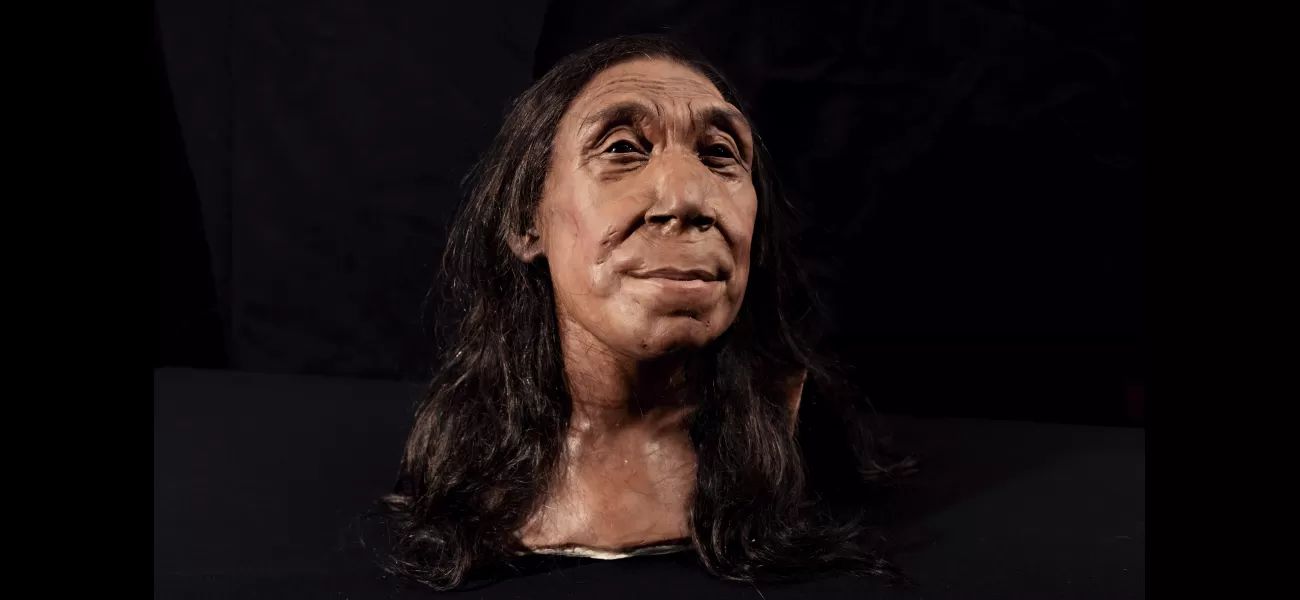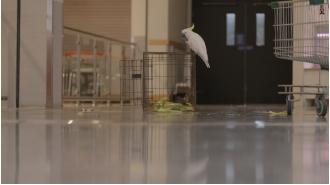A Netflix documentary reveals the face of a Neanderthal woman who lived 75,000 years ago.
She appears youthful despite being 75,000 years old.
May 1st 2024.

Allow me to introduce you to Shanidar Z, a 75,000-year-old female Neanderthal whose story has been brought to life in a groundbreaking new Netflix documentary. A team of skilled archaeologists from the University of Cambridge and Liverpool John Moores University have meticulously pieced together her face from hundreds of bone fragments, revealing the face of a species that has long captivated our curiosity.
Shanidar Z was discovered in 2018 in the rugged landscape of Iraqi Kurdistan. She was found in a cave that served as a final resting place for the Neanderthals, a species that repeatedly returned to lay their dead to rest. This particular cave, known as Shanidar, became famous in the late 1950s when several Neanderthal remains were unearthed, suggesting a ritualistic burial practice.
The new documentary, aptly titled Secrets Of The Neanderthals, takes us on a journey as the team returns to Shanidar cave to continue their excavations. Dr. Emma Pomeroy, a palaeo-anthropologist from Cambridge, explains the stark physical differences between Neanderthals and humans, with the former having larger brow ridges and a lack of chin. However, the recreated face of Shanidar Z suggests that these differences may not have been as pronounced in life.
Putting together the shattered pieces of the skull was no easy feat. Dr. Lucía López-Polín, the lead conservator, had to painstakingly piece together over 200 fragments of the skull by hand, using glue and consolidant to stabilize the delicate bones. Dr. Pomeroy compares the consistency of the bones to a biscuit dunked in tea, highlighting the fragility of the remains.
It is believed that the skull was crushed by rockfall shortly after Shanidar Z's death, as the researchers found it flattened to only two centimeters and buried in sediment. Interestingly, the team suspects that this may be the top half of an individual who was uncovered in 1960. By examining her teeth, the researchers determined that Shanidar Z was an older female, with signs of wear and tear showing some teeth worn down to the root.
Standing at around five feet tall, Shanidar Z was also noted for having the smallest adult arm bones in the Neanderthal fossil record. Her posture, with her left hand curled under her head and a small rock behind it, suggests that she may have been laid to rest against the side of a gully formed by running water. Professor Graeme Barker, who leads the excavations at the cave, believes that Shanidar Cave holds the key to one of the biggest questions in human evolution - why did the Neanderthals disappear around the same time as Homo sapiens spread across their territories?
The release of Secrets Of The Neanderthals on Netflix has been highly anticipated, and for good reason. It offers a unique glimpse into the lives of our ancient ancestors and the remarkable discoveries that continue to shape our understanding of human evolution. So mark your calendars for May 2nd at 8am, and join us on this thrilling journey back in time.
Shanidar Z was discovered in 2018 in the rugged landscape of Iraqi Kurdistan. She was found in a cave that served as a final resting place for the Neanderthals, a species that repeatedly returned to lay their dead to rest. This particular cave, known as Shanidar, became famous in the late 1950s when several Neanderthal remains were unearthed, suggesting a ritualistic burial practice.
The new documentary, aptly titled Secrets Of The Neanderthals, takes us on a journey as the team returns to Shanidar cave to continue their excavations. Dr. Emma Pomeroy, a palaeo-anthropologist from Cambridge, explains the stark physical differences between Neanderthals and humans, with the former having larger brow ridges and a lack of chin. However, the recreated face of Shanidar Z suggests that these differences may not have been as pronounced in life.
Putting together the shattered pieces of the skull was no easy feat. Dr. Lucía López-Polín, the lead conservator, had to painstakingly piece together over 200 fragments of the skull by hand, using glue and consolidant to stabilize the delicate bones. Dr. Pomeroy compares the consistency of the bones to a biscuit dunked in tea, highlighting the fragility of the remains.
It is believed that the skull was crushed by rockfall shortly after Shanidar Z's death, as the researchers found it flattened to only two centimeters and buried in sediment. Interestingly, the team suspects that this may be the top half of an individual who was uncovered in 1960. By examining her teeth, the researchers determined that Shanidar Z was an older female, with signs of wear and tear showing some teeth worn down to the root.
Standing at around five feet tall, Shanidar Z was also noted for having the smallest adult arm bones in the Neanderthal fossil record. Her posture, with her left hand curled under her head and a small rock behind it, suggests that she may have been laid to rest against the side of a gully formed by running water. Professor Graeme Barker, who leads the excavations at the cave, believes that Shanidar Cave holds the key to one of the biggest questions in human evolution - why did the Neanderthals disappear around the same time as Homo sapiens spread across their territories?
The release of Secrets Of The Neanderthals on Netflix has been highly anticipated, and for good reason. It offers a unique glimpse into the lives of our ancient ancestors and the remarkable discoveries that continue to shape our understanding of human evolution. So mark your calendars for May 2nd at 8am, and join us on this thrilling journey back in time.
[This article has been trending online recently and has been generated with AI. Your feed is customized.]
[Generative AI is experimental.]
0
0
Submit Comment





